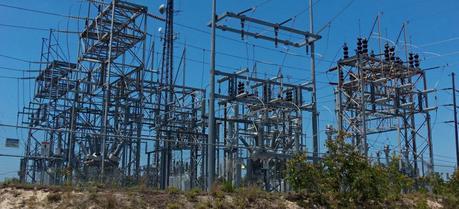 An electrical substation somewhere in Florida.(Credit: Flickr @ Daniel Oines http://www.flickr.com/photos/dno1967b/)
An electrical substation somewhere in Florida.(Credit: Flickr @ Daniel Oines http://www.flickr.com/photos/dno1967b/)
Energy Secretary Ernest Moniz yesterday released the Energy Department’s Grid Energy Storage report to the members of the Senate Energy and Natural Resources Committee.
The report was commissioned at the request of Senator Ron Wyden, Committee Chairman. The report identifies the benefits of grid energy storage, the challenges that must be addressed to enable broader use, and the efforts of the Energy Department, in conjunction with industry and other government organizations, to meet those challenges.
“Energy storage is a vital component of a more resilient, reliable and efficient electric grid,” said Secretary Moniz. “We must continue developing innovative energy storage technologies and finding new ways to ensure wider adoption to help move the nation closer to the grid of the future.”
The energy storage report identifies four challenges that must be addressed to enable energy storage: the development of cost-effective energy storage technologies, validated reliability and safety, an equitable regulatory environment, and industry acceptance. The need for energy storage in the electric grid is increasing as a result of the growing use of renewable power generation, which varies with wind and solar conditions, and increasing frequency of severe weather caused by climate change. The grid’s evolution toward more distributed energy systems and the incorporation of electric vehicles and plug-in hybrids also contributes to the growing interest in grid storage.
“Developing and deploying energy storage opens the door to adding more renewable power to the grid, which is essential to the fight against climate change,” Wyden said. “Energy storage will also help lower consumer costs by saving low-cost power for peak times and making renewable energy available when it’s needed the most, not just when the wind is blowing or the sun is shining. I’m looking forward to working with Secretary Moniz to find ways to implement the DOE’s recommendations to make energy storage an integral part of our country’s electricity grid.”
According to the energy storage report, at present, the U.S. has about 24.6 GW (approx. 2.3% of total electric production capacity) of grid storage, 95% of which is pumped storage hydro. Europe and Japan have notably higher fractions of grid storage. Pursuit of a clean energy future is motivating significantly increased storage development efforts in Europe and Asia, as well as the U.S.
It is emphasized in the in the executive summary of the Energy Department’s Grid Energy Storage report that the future for energy storage in the U.S. should address the following issues: energy storage technologies should be cost competitive (unsubsidized) with other technologies providing similar services; energy storage should be recognized for its value in providing multiple benefits simultaneously; and ultimately, storage technology should seamlessly integrate with existing systems and sub-systems leading to its ubiquitous deployment.
In an earlier news article we reported on the recently released Technical University of Denmark’s International Energy Report 2013, which is also focused on energy storage. According to this report, one of the greatest challenges in the transition to a non-fossil energy system with a high share of fluctuating renewable energy sources, such as solar and wind, is to align consumption and production in an economically satisfactory manner. And yet another report on the economics of electricity storage found that “the way to future electricity storage is not clear-cut” and that “there is no universal answer to whether storage is a profitable investment or adds value to a system”.

